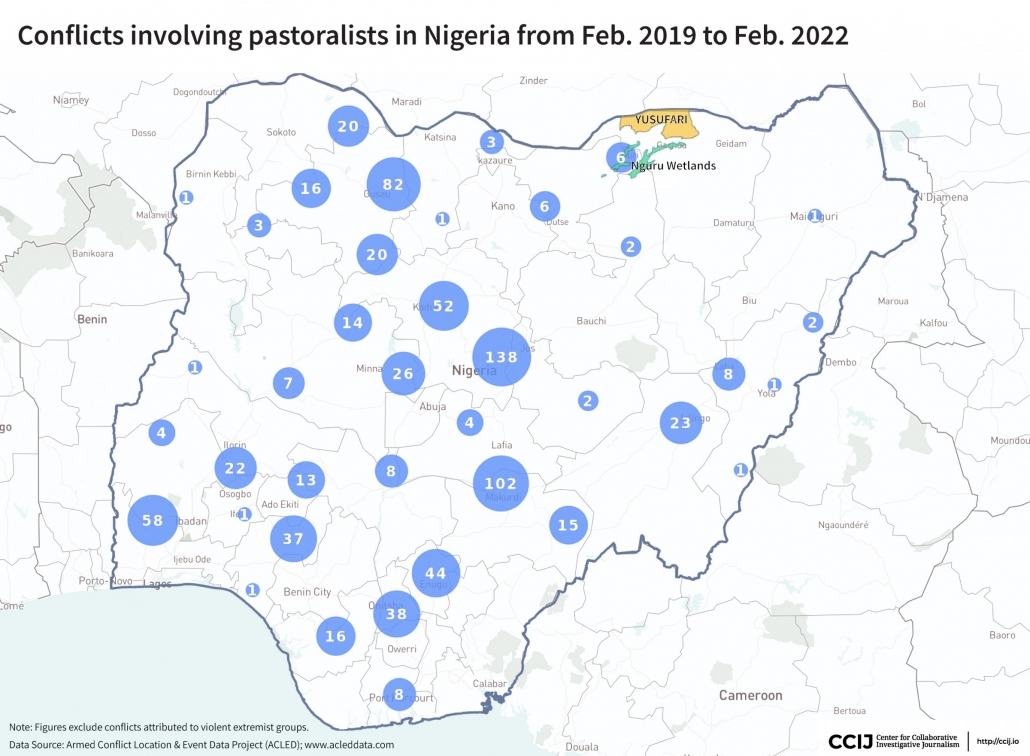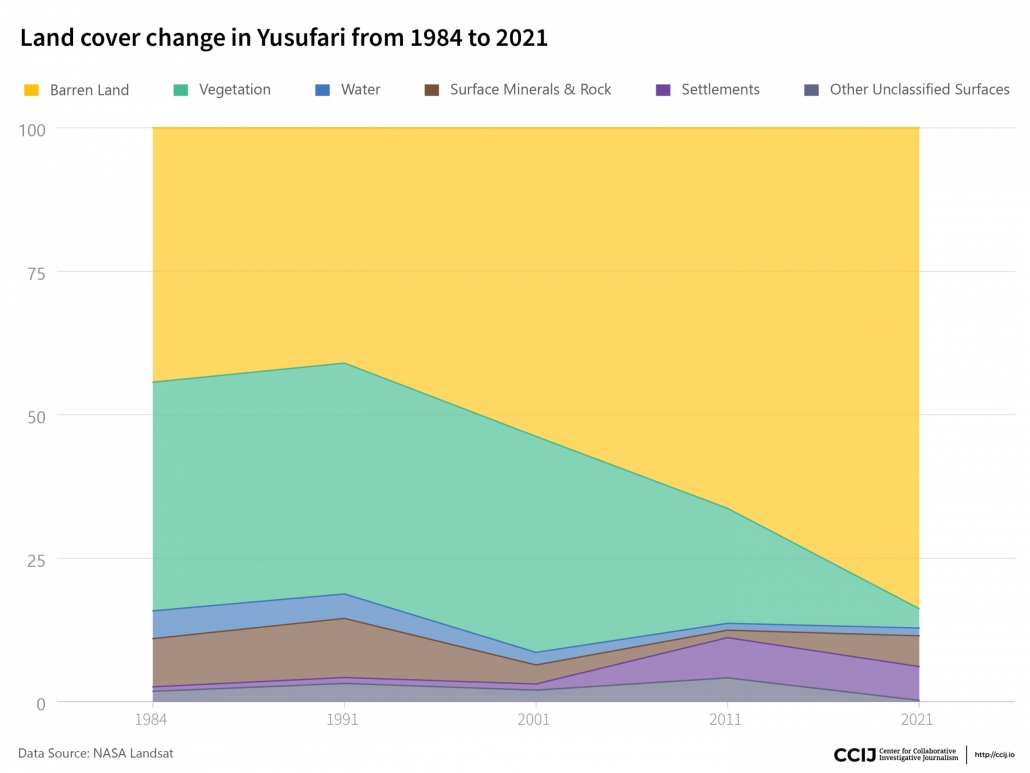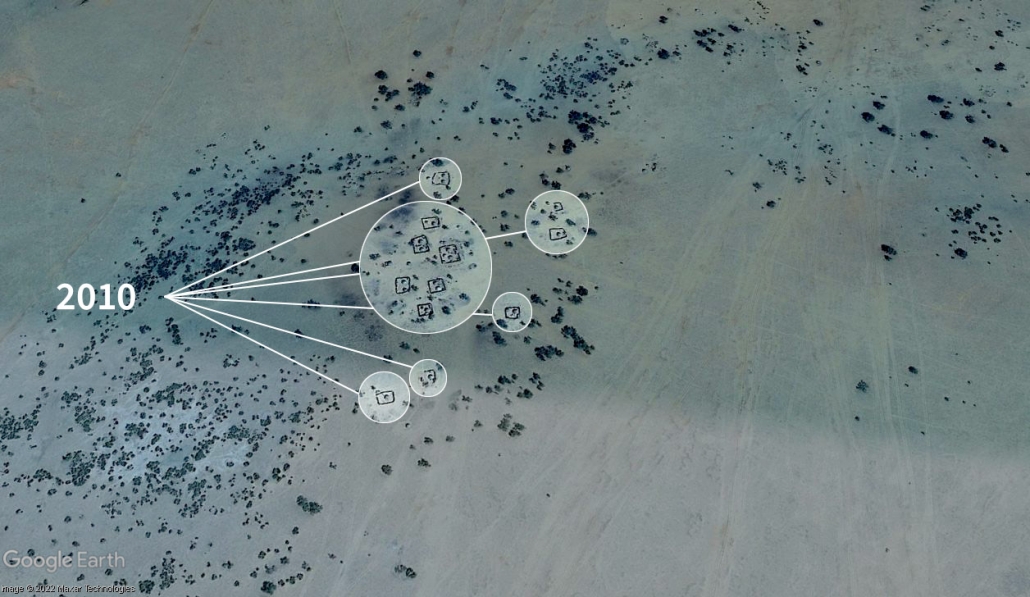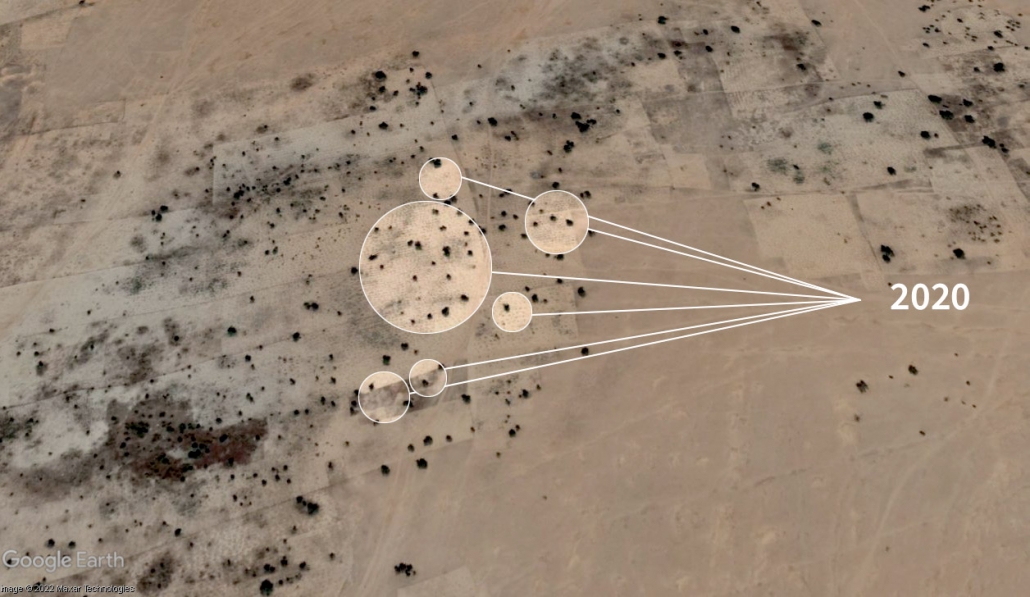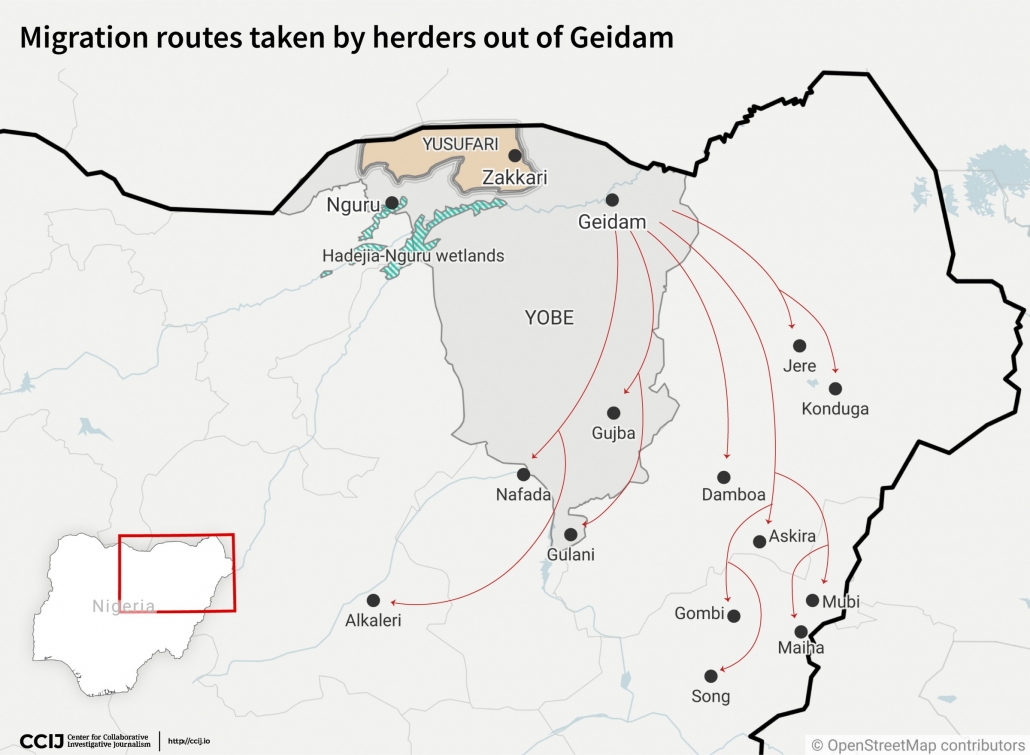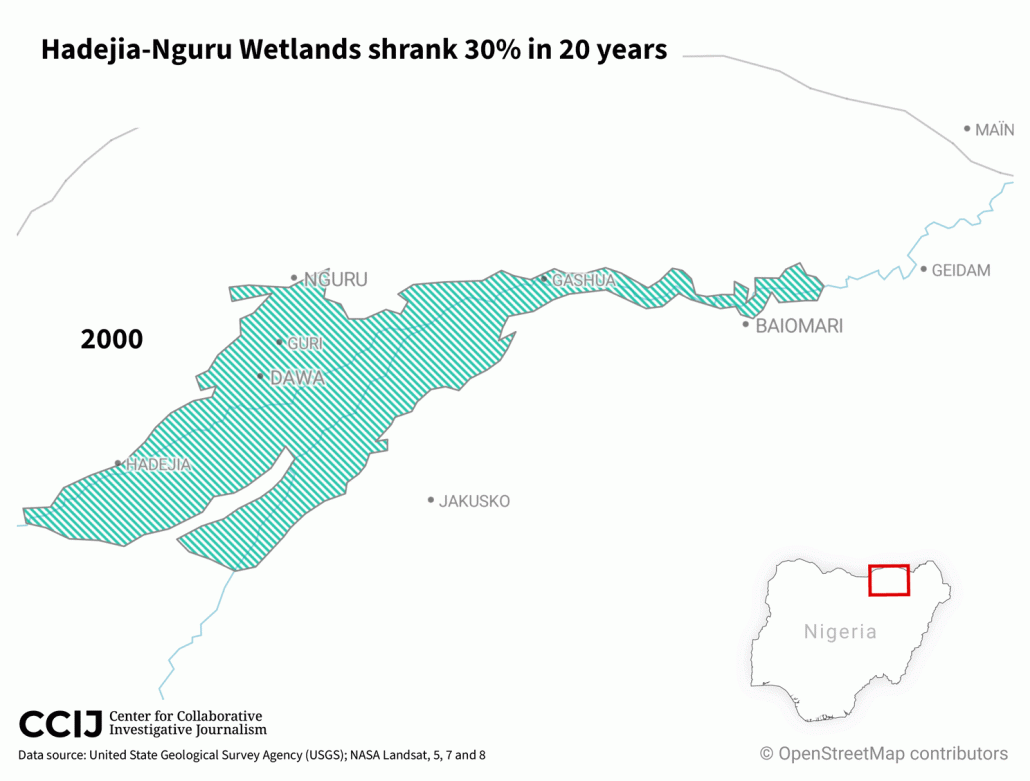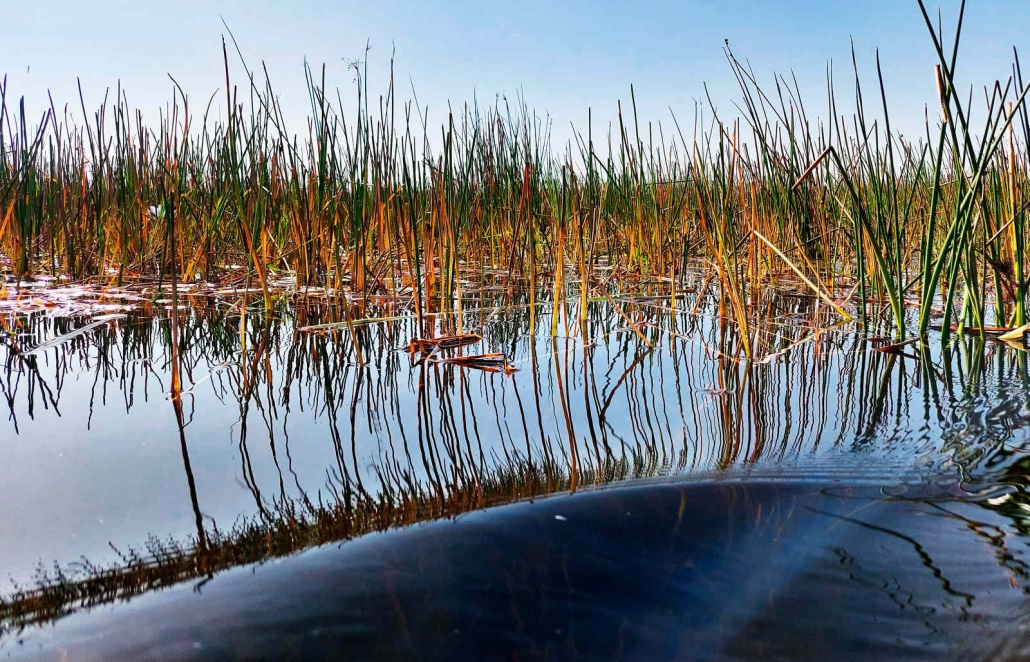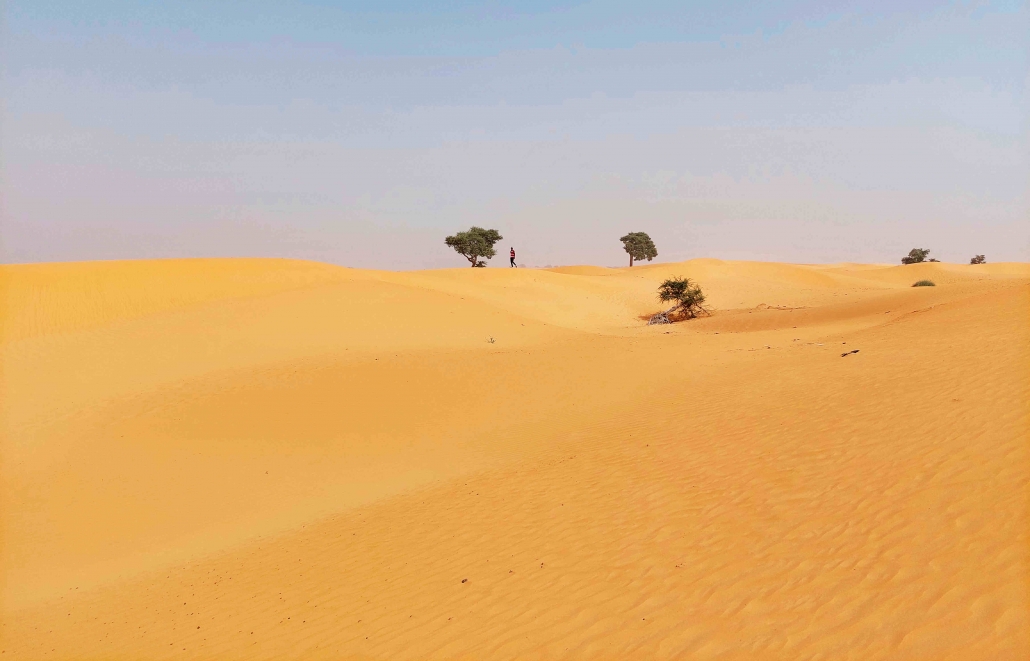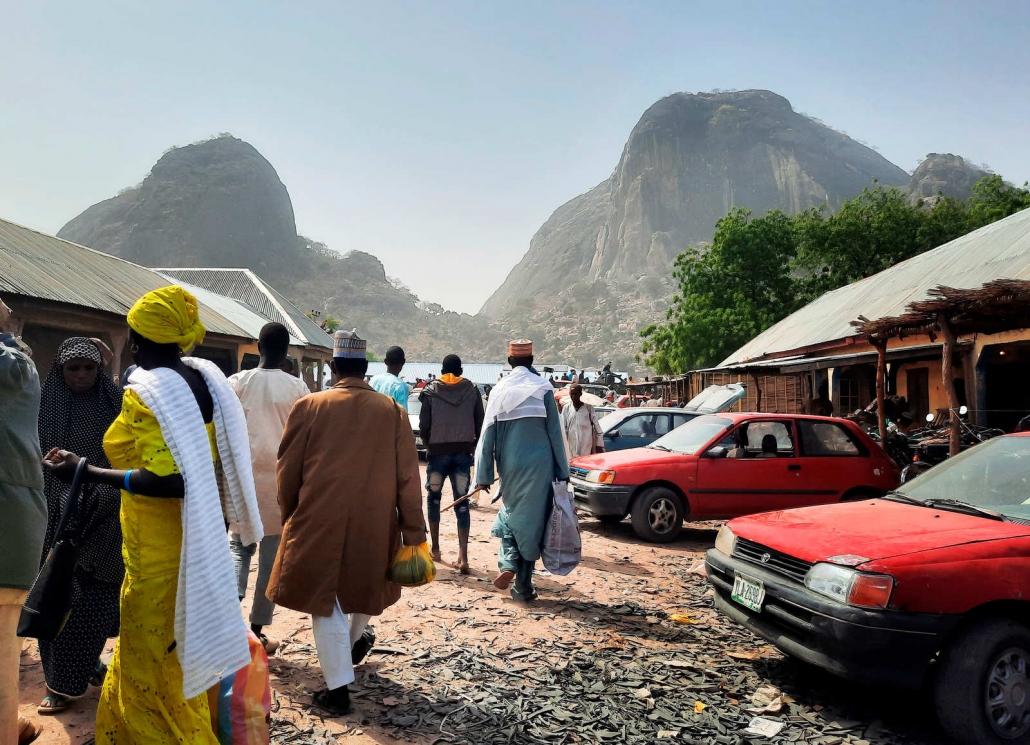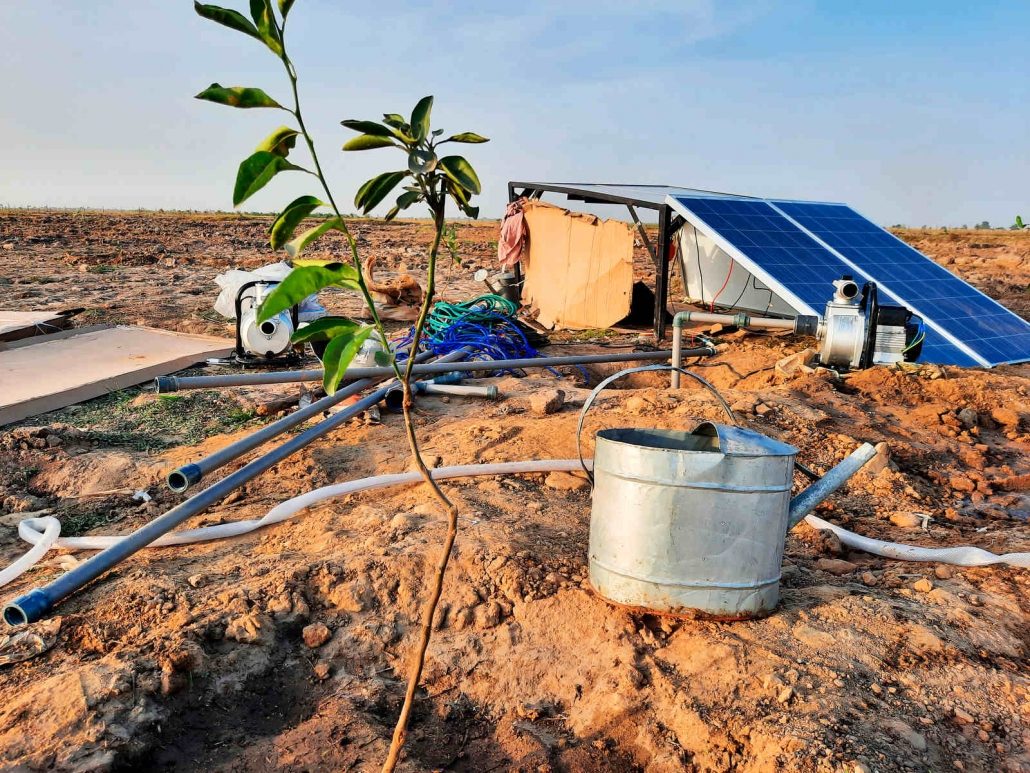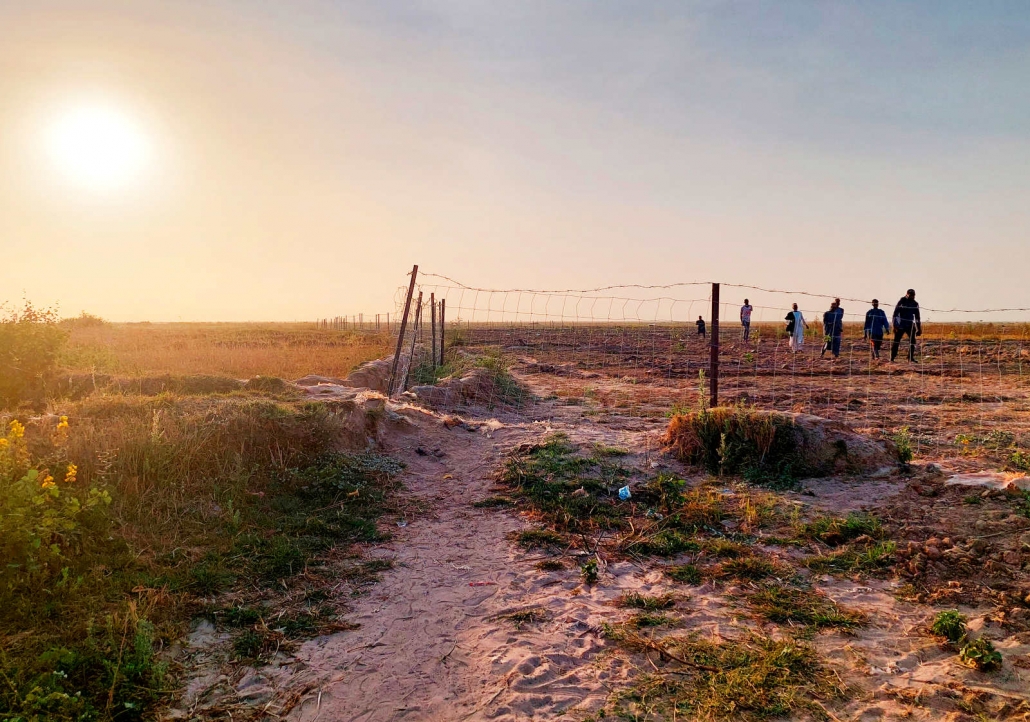How climate change and human activity are driving violence between farming and pastoralist communities.
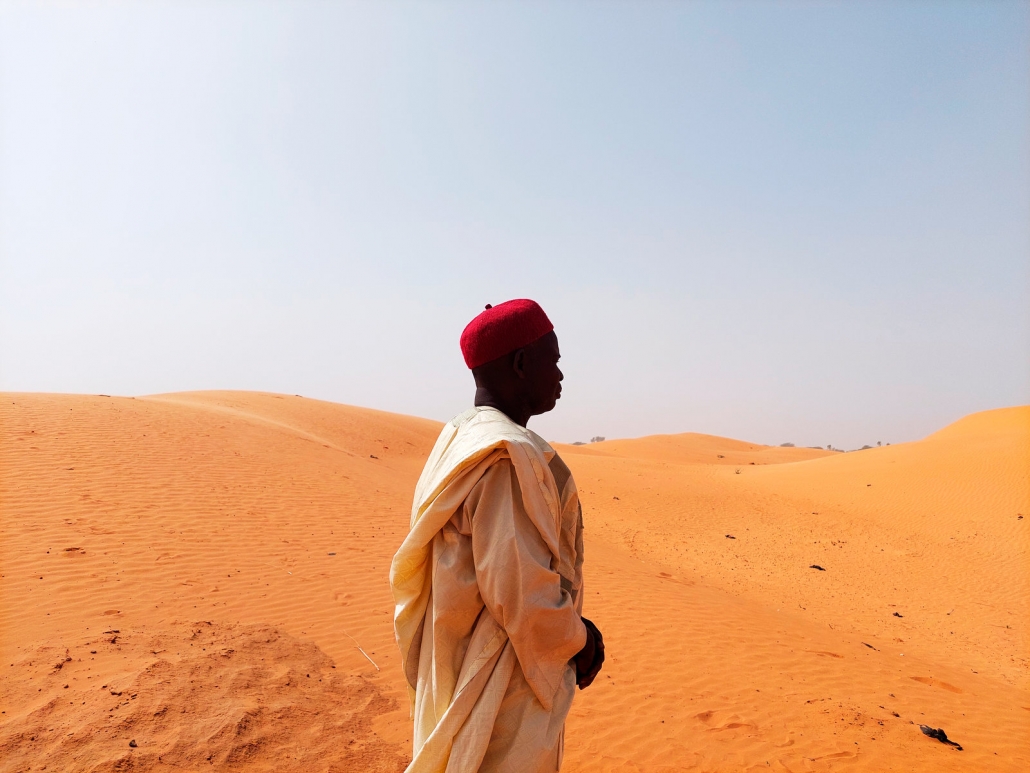
Gaja Usman, leader of the Miyetti Allah Cattle Breeders Association of Nigeria, looks out over the shifting sand dunes that have pushed back the Zakkari community in Yusufari. The encroaching desert displaced him from his hometown, made livestock farming difficult and worsened water scarcity issue.
Photo by Murtala Abdullahi
By Kunle Adebajo and Murtala Abdullahi, CCIJ — April 14, 2022
A bare-chested old man lies in the emergency room of a government hospital in northeast Nigeria. An intravenous line sticks out from his right arm and an arrow from his left shoulder. A second arrow, with the tip now detached from its shaft, rests on a bedside table some feet away. About a third of the man’s left arm is dressed in blood-stained gauze. The blood stains are also visible on his white trousers and his unbuttoned navy blue jacket. Within a few hours, Usman Alhaji Mikaila has gone from working on a rice farm to fighting for his life.
The previous day, at a farm in Nguru, Yobe state, where Mikaila was the foreman, workers were husking recently harvested rice when a herd of cattle started grazing on the same field. Normally, Mikaila said, the herders would leave the farmers to clear the husked grains before releasing the cattle to graze.
But as Mikaila walked in the direction of the herders to complain about the disturbance, several arrows rained down on him. When the herders ran out of arrows, Mikaila says that one of them charged at him with a machete.
“I was carrying a bunch of wood for the workers. The herder cut up the wood and then my hand,” he says, gesticulating with his unhurt arm. “Now they say the hand cannot be a hand again. It has to be amputated.”
A younger victim who came to Mikaila’s aid was struck on the head. He had major nerve damage and had to be transferred to a better-equipped health facility in a neighboring state.
A new wave of bloodshed
Mikaila has been farming for over 40 years, but this is the first time an encounter with herders has been life-threatening. “We have issues from time to time, but it has never escalated to violence,” he notes. The Dec. 15, 2021, incident that harmed Mikaila and another farmer is just one in a larger pattern of growing hostilities between herders and farmers in this region.
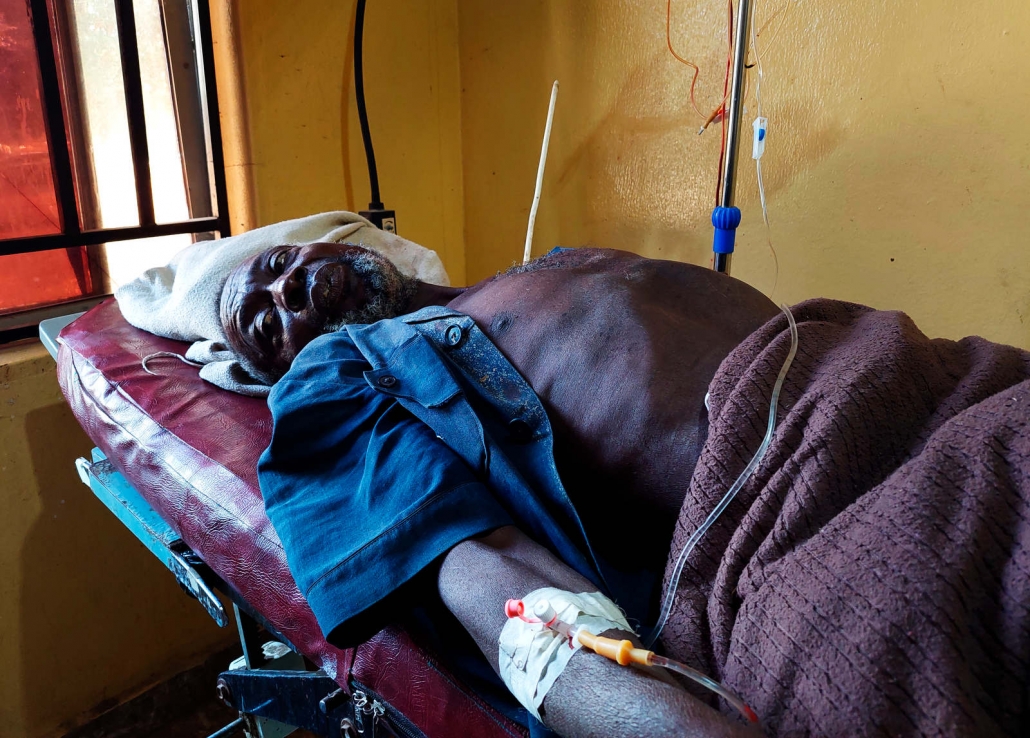
Usman Alhaji Mikaila lies in a hospital while being treated for a deep machete wound on his hand and an arrow that pierced his shoulder. Mikaila was injured in a violent attack when he confronted a group of herders encroaching onto a rice farm in Nguru where he was the foreman.
Photo by Murtala Abdullahi
At least 3,641 lives were lost to the crisis between 2016 and 2018, according to Amnesty International, with over half of the fatalities recorded in 2018 alone. In the first half of the same year, an estimated 300,000 people were displaced for the same reason. The north-central region of Nigeria has notably been the hotbed of these clashes. But the violence is fast spreading to other parts of the country, including the south.
Decades ago, farmers and herders in Nigeria enjoyed a relatively peaceful coexistence. In the pre-colonial era, mechanisms such as the traditional administrative system which regulated grazing activities and demarcated cattle migratory routes, known as the burti, were key to establishing clear boundaries between farmers and herders. In recent years, however, these mechanisms have started to collapse.
The problem has only been exacerbated by banditry and the Boko Haram insurgency in the north, which has forced the nomadic Fulani herder households to migrate south. Thanks to improvements in veterinary medicine and cattle breeds, their herds can now survive tropical diseases in southern Nigeria.
But even if insecurity issues in the north were swiftly solved, the area would still not be attractive to return to. Climate change and human activity are driving desertification, a form of land degradation which leads to vegetation loss and fewer water sources.
And while the resources herders and farmers compete over – fertile land and water – are rapidly dwindling, the populations of both groups are fast growing. The result? Distrust. Attacks. Counterattacks. Even more distrust. And then a seemingly unending cycle of brutality and bloodbath.
In the last few years, the Nigerian government has begun to acknowledge the severity of the problem and allocated some resources to address it, but there have been a series of issues with the appropriation, delivery and, ultimately, effectiveness of these resources. The government has even tried to retrain some herders to work as ranchers, but there is little known about the progress of this initiative.
The end result of these controversial and often unsuccessful initiatives, when paired with the accelerating rate of desertification, is not just continued violence, but the potential elimination of entire ways of life with all but uncertain prospects for the future.
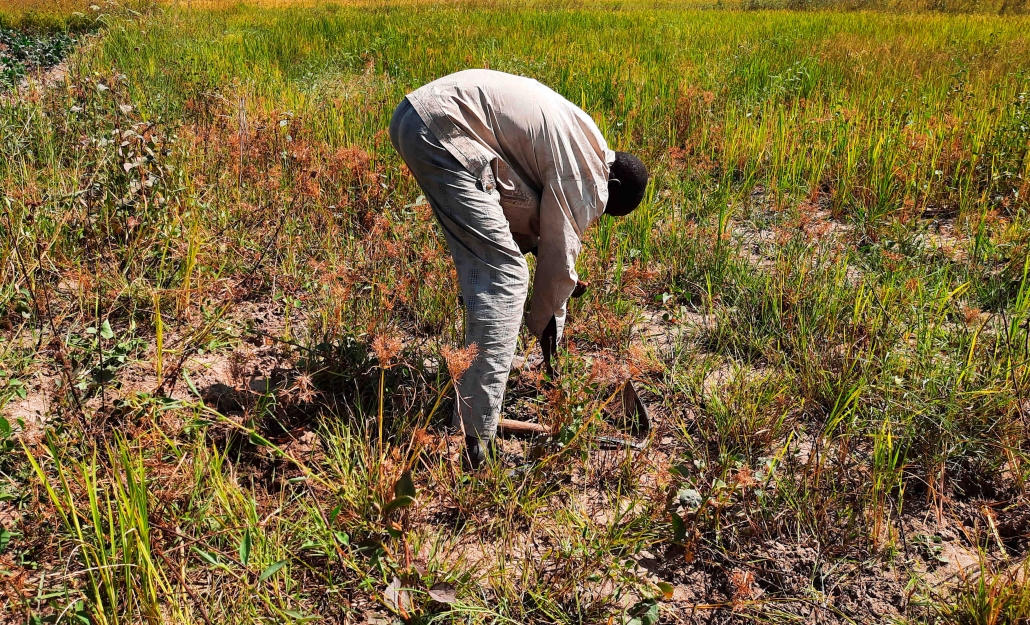
Farmer Jamilu Haruna says he was just beginning to harvest his rice crops when they were eaten by grazing cattle. Before the planting season ends, he will plant bean seeds on the farm to recoup some of his loss.
Photo by Kunle Adebajo
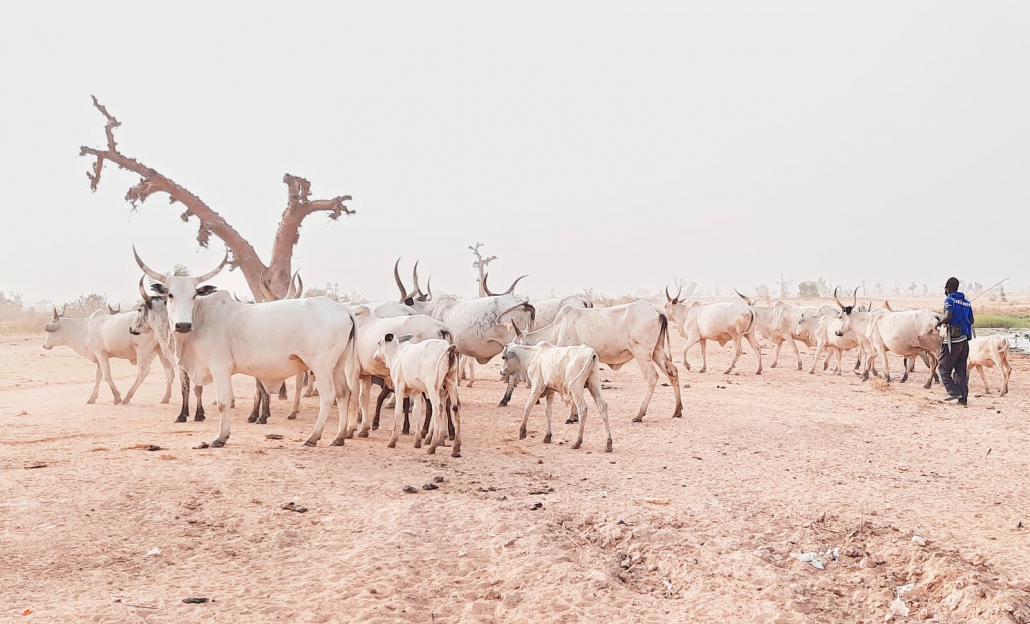
Migrant herders with their cattle along the Song-Yoda Road in Adamawa state. Locals complain of the seasonal influx of more herders who come in search of pasture and water. The International Crisis Group estimates that in the first half of 2018 alone, more than 1,300 people were killed and over 300,000 displaced as a result of herder-farmer violence.
Photo by Kunle Adebajo
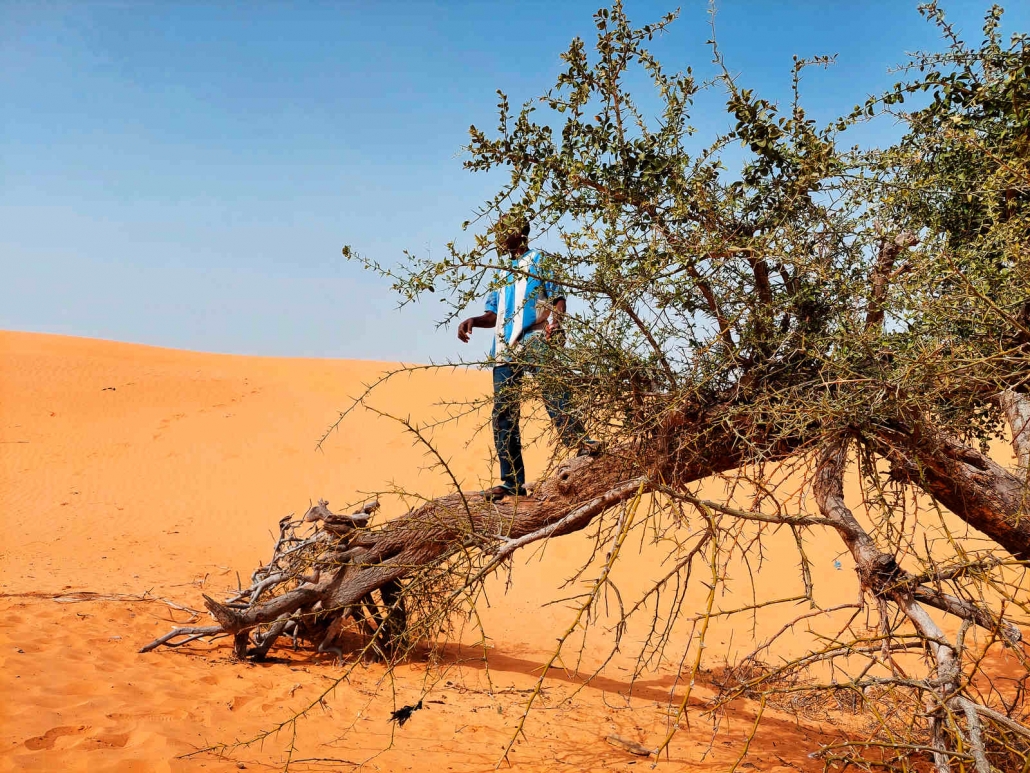
Muhammad Zakkari, 37, stands on a lone uprooted Aduwa (Desert Date) tree next to where a house once stood before the sands of the Sahara overtook his former home village of Zakkari. The village is among many in the northeastern region of Yobe State in Nigeria that is on the frontlines of the desert’s encroachment.
Photo by Murtala Abdullahi

